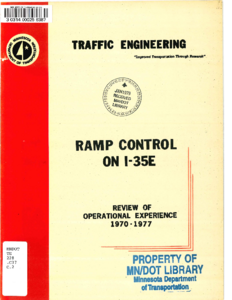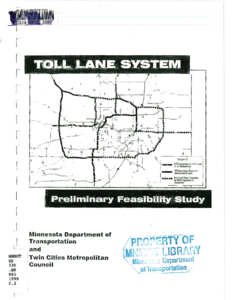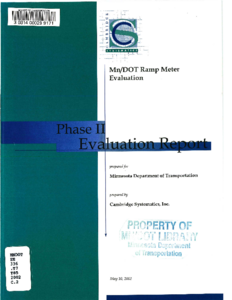Evaluation of the I-694 Traffic Management System
Date Created
1985-03
Report Number
1985-01
Description
Toll Lane System: Preliminary Feasibility Study
Date Created
1998-01
Description
Enhancements of the KRONOS Simulation Package and Database for Geometric Design, Planning, Operations, and Traffic Management in Freeway Networks/Corridors (Phase III)
Date Created
1997-07
Report Number
1999-11
Description










